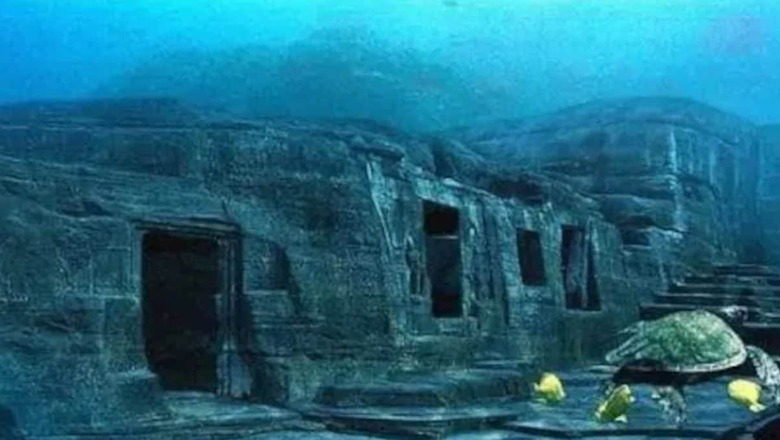
views
The world we inhabit today is woven with the threads of diverse cultures, ancient mysteries, and the remnants of civilisations lost to time. In exploring the fascinating facets of our planet, scientists and explorers often encounter enigmatic relics from the grandeur of geological formations like the Giant’s Causeway to the curious debate surrounding submerged mountains, our planet holds secrets that both baffle and mesmerise us. One such structure that has caught global attention presently is situated deep beneath the waters near Japan. There lies the remnant of an ancient city, constructed by a vanished civilization eons ago.
Named Yonaguni Monument, this massive 50m-long-by-20m-wide behemoth is one of the world’s most unusual underwater sites and is popularly known as Japan’s Atlantis. These stone structures rest in Yonaguni Jima, the westernmost inhabited island in Japan, as reported by National Geographic. Seismic forces submerged this ancient city some 2,000 years ago, a revelation made in 1987 when a local diver exploring the Ryukyu Islands’ coastal waters stumbled upon meticulously carved steps with precise edges.
According to an earlier BBC report, this rectangular, pyramid-like monument is believed to be a relic of a long-lost Pacific civilization, potentially constructed by Japan’s prehistoric Jomon people, who inhabited the islands as early as 12,000 BC.
While some experts draw parallels to Northern Ireland’s Giant’s Causeway, suggesting a natural origin due to thousands of interlocking basalt columns formed by ancient volcanic activity, the underwater structure in Yonaguni Jima possesses distinctive features. Arched entrances, narrow passageways, and its connection to a larger rock mass distinguish it, as outlined in the BBC report.
However, not all have the same opinion. Professor Robert Schoch of Boston University, a scientist and mathematician who has explored the site, disagrees with the notion of man-made structures.
“I’m not convinced that any of the major features or structures are man made steps or terraces, but that they’re all natural,” he told National Geographic. “It’s basic geology and classic stratigraphy for sandstones, which tend to break along planes and give you these very straight edges, particularly in an area with lots of faults and tectonic activity,” he further explained.
Despite the ongoing debate, interest and controversy surrounding its origin, the Japanese government’s Agency for Cultural Affairs and the Okinawa Prefecture government does not officially recognise the remains of Yonaguni as significant cultural property.




















Comments
0 comment